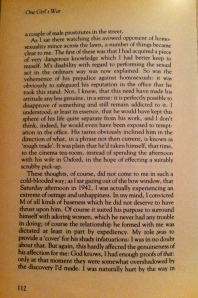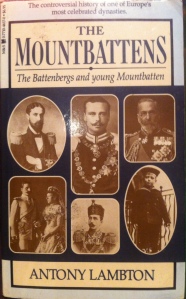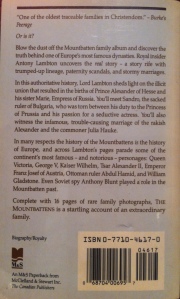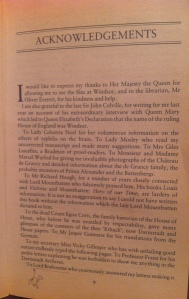Reading this indignant page
Know that in a former time
Love! Sweet Love! was thought a crime
(A Little Girl Lost – William Blake from Songs of Innocence & Experience)
On 7 December 1977 Cyril Townsend MP had introduced his private member’s bill aimed at ‘preventing the exploitation of children by their use in the production of films or photographic material of an obscene of pornographic character’
HC Deb 07 December 1977 vol 940 c1404
Mr. Cyril D. Townsend, supported by Mr. Nigel Forman, Mr. Kenneth Baker, Mr. Peter Bottomley, Mr. Nicholas Scott, Mr. Hugh Dykes, Mr. Michael Alison, Mr. Richard Luce, Mr. A. J. Beith, Mr. George Rodgers, Mr. Ken Weetch and Mr. John Cartwright, presented a Bill to prevent the exploitation of children by their use in the production of films or photographic material of an obscene or pornographic character: And the same was read the First time; and ordered to be read a Second time upon Friday 10th February and to be printed [Bill 16].
Following PIE’s June 1978 AGM, on 13 June PIE had sent out an emergency bulletin to its members informing them PIE had been infiltrated by the News of the World and that police raids had taken place at Executive Committee Member’s houses. All of the material for the July issue of Magpie had been seized.
The emergency bulletin of 13 June is most likely the document below (although undated). Reportedly the police had seized a large number of PIE’s files “and we feel that they are determined and that it will only be a matter of time before they obtain a list.”
“It may be that people in positions of power and influence are using the possibility of a charge under the Obscenity Laws as a excuse for a witch-hunt against PIE and its members.”
If the above were true surely it would have been much more advisable for the police to hold tight to wait and raid during August 1978 once the Child Protection Act had come into force? Using the antiquated Obscenity Laws, ripe for reform and much criticised already, when the Act had been specifically drafted to create offences for which PIE members could have been charged with was, with hindsight, a strange decision and led to articles like Alan Rusbridger’s on ‘Why the DPP resurrected an ancient law to deal with pedophiles’ [Guardian, 14 March 1981]
Despite PIE and NCCL’s combined and best lobbying efforts to dilute or better still, derail the Bill’s passage through parliament, (one tactic being to publish to each MP the booklet drafted by the Albany Trust under Sir Harold Haywood’s chairmanship in April 1978) on 20th July 1978 the Child Protection Bill received royal assent, coming into force a month later.
The June bulletin signed off with the the first stanza of A Little Girl Lost by Blake.
In August PIE circulated the news bulletin below to advise members the act was in force and which kind of photos of children might be deemed ‘indecent’. The bulletin suggests a potential legitimate reason under the act for showing, possessing or distributing indecent photos of children would be psychiatrists showing patients images of child abuse as a form of aversion therapy.
And what of the significance of the Blake quote?
Blake had long been a friend and pupil of Richard ‘Dicky’ Cosway, who had been appointed Painter to the Prince Regent in 1785 – the only time this royal appointment was ever made. Cosway had created a craze for secret lovers to give presents to one another – borne of the Prince Regent’s secret marriage to Maria Fitzherbert [read more here] – miniature eye portraits.
“Cosway was not only a famous and fashionable painter; he was also a mesmerist and magician who practised arcana related to alchemical and cabbalistic teaching. There are reports of erotic ceremonies, the imbibing of drugs or ‘elixirs’, and ritual nudity. Blake was no stranger to the symbols or beliefs of a man such as Cosway – the manuscript of the poem he was now writing contains many drawings of bizarre sexual imagery, including women sporting giant phalli and children engaged in erotic practices with adults.” [Blake, Peter Ackroyd, p.210]
“When William Blake died in 1827, his widow Catherine appointed Frederick Tatham his literary and artistic executor. No sooner had Tatham accepted the position than he was, in the words of William Michael Rossetti, brother of Dante Gabriel Rossetti, “beset” by “Swedenborgians, Irvingites, or other extreme sectaries”, and compelled to thrust “a gag into the piteous mouth of Blake’s corpse”. What these timid souls feared was that Blake’s remains would disclose his intense, frequently obsessive and occasionally pornographic interest in sex. Tatham’s job amounted to a full-scale expurgation of what Blake’s less unbuttoned followers considered obscene. Blake had left many drawings and manuscripts containing his most explicit sexual, religious and political expressions – all three were linked for him – and Tatham felt obliged to destroy these. The loss was irreparable, but some of the cover-up – literally – was less extreme. Joined by Blake’s friend John Linnell, on some works Tatham only erased the offending words or images. When this proved impracticable they resorted to a fig leaf. Blake’s original nude self-portrait for his Milton exhibited an erect and oddly blackened penis. One of Blake’s prudish descendants mitigated the shock caused by the poet’s proud member by drawing knickers over it. Thankfully, modern technology has restored much of this censored material, and what emerges is a vivid recognition that for Blake, sex was at the centre of his spiritual and domestic life.” [Why Mrs Blake cried by Marsha Keith Schuchard, Gary Lachman, The Independent, 12 March 2006]
What is little mentioned in connection with Blake is that he and Richard Cosway, along with others such as the landscape painter Loutherbourg (set designer at Drury Lane Theatre) were together conducting ‘magick’ rituals involving sex with children and much of what Tatham and Linell were trying to delete or obscure were Blake’s depictions of children engaged in sexual acts with adults.

Why Mrs Blake Cried: William Blake and the Erotic Imagination By Marsha Keith Schuchard, published May 2013
In 1770 the child who Lord Byron called “England’s wealthiest son”, William Beckford, aged 10, inherited Fonthill on the death of his father Alderman William Beckford, Lord Mayor of London. In 1881 to celebrate his 21st birthday William threw a 3 day ‘ritualistic and magical celebration’ at Fonthill which sounds not dissimilar to a son et lumiere show combined with the sexual abuse of children, noted as he was for his pederasty as much as his aesthetic appreciation of art and his collections.
“In the autumn of 1781, shortly after being elected to the British Academy of Art as a landscape painter, Alsatian-born artist Philippe Jacques de Loutherbourg was hired by the wealthy young aesthete William Beckford to prepare a private birthday spectacle at his mansion in Wiltshire. De Loutherbourg, who was also chief scenographer at Drury Lane theatre and the inventor of a recent commercial “moving picture” entertainment called theEidophusikon, promised to produce “a mysterious something that the eye has not seen nor the heart conceived.” Beckford wanted an Oriental spectacle that would completely ravish the senses of his guests, not least so that he could enjoy a sexual tryst with a thirteen year old boy, William Courtenay, and Louisa Beckford, his own cousin’s wife.
The resulting three day party and spectacle staged over Christmas 1781 became one of the scandals of the day, and ultimately forced William Beckford into decades of exile in Europe to escape accusations of sodomy. However, this Oriental spectacle also had a special significance for the history of Romantic aesthetics and modern-day cinema. Loutherbourg and Beckford’s collaboration provided the inspiration for William to write his scintillating Gothic novel, Vathek, and impelled Philippe himself into revising his moving-picture program in dramatically new ways. Ultimately this saturnalian party of Christmas 1781 constituted a pioneering experiment in applying the aesthetic of the sublime to virtual reality technology. It also led Loutherbourg to anticipate the famous nineteenth-century “Phantasmagoria” of French showman, Gaspard Robertson, by producing in 1782 a miniature Gothic movie scene based on the Pandemonium episode in Milton’s Paradise Lost.” [The Virtual Infernal: Philippe de Loutherbourg, William Beckford and the Spectacle of the Sublime, Ian McMalman, Romanticism on the net, 2007]
While at Trinity College Cambridge, (according to Robin Bryans in the The Dust has never settled (1992)) a 22 year old Antony Blunt had started the ‘vogue for the work and life-style of William Beckford’ [p.576] forming a ‘Beckford cult.’ In the February 1929 edition of The Venture (published at Cambridge for 6 issues until June 1930) Blunt heaped praise on ‘the dazzling architectural ensemble’ of Beckford’s Fonthill estate, calling it ‘artistically the best production of the Gothic revival’ while Bryans refers to it as ‘a vast neo-Gothic country house with a megalomaniac tower”. In 1934 Blunt started lecturing on art history at the Courtauld Institute, 20 Portman Square, where Queen Mary of Teck (the current Queen’s paternal grandmother) would attend to listen. Robin Bryans had this to say on Queen Mary and Blunt’s relationship:
“It was almost as if a conspiracy existed between the Russian spy and the dowager Queen, because they both knew perfectly well the homosexual history of newcastle men going up the white marble staircase at Clumber. Silently, they were aware of William Beckford’s escape to the Continent after buggering his schoolboy cousin, and the resemblance that incident bore to Queen Mary’s own husband who died with the famous words ‘Bugger Bognor’ for he, as the King of England, had been obliged to flaunt the authority of his own Attorney General by getting another bugger out of the country.” [p.199]
Clumber Park was the home of the Pelham-Clintons, Dukes of Newcastle (bearing in mind Peter Righton also had the name Pelham). Who had King George V broken the law for and assisted to flee the country to avoid prosecution by “his own” Attorney-General?
Inspired by his birthday celebrations the following year he wrote “Vathek” and built Fonthill Abbey on the grounds of the estate, creating an ‘Arcadian idyll’ according to the sale particulars of 1829.

Fonthill History website http://www.fonthill.co.uk
James Morrison, MP for Ipswich Suffolk and a Victorian haberdasher called the ‘Napoleon of Shopkeepers’ (ever since he’d made a fortune stockpiling black crepe in time for William IV’s death), eventually bought the Fonthill estate in 1830 despite the decayed state of the Abbey. He restored and extended the grounds and passed the estate down the Morrison family until it reached Lord Margadale, the father of Sir Peter Morrison MP (Con: Chester 1974 – 1992).
A man who grew up in Hindon Wiltshire living near the Fonthill estate gives an account of seeing Lord Johnnie Morrison at the hunt one New Year’s Day in 1952-1953 and also has this to say about his son Peter:
“Morrison was father to Charles Morrison tory mp for Devizes and Peter Morrison tory mp for Chester. Johnnie himself was given the hereditary peerage of Margadale now passed to his grandson. Peter Morrison – who had no experience of life outside of the Fonthill estate, Eton and Tory party somehow managed to develop extreme right wing views on morality while flouting them in his personal life. Is it any wonder that a man from such a background would see his ‘droit de seigneur’ as young working class boys in care homes as an alternative to scullery maids?” [Sir Peter Morrison of Fonthill – I knew your family, Ian Bone, 8 November 2012 – with thanks to @LordBonkers for signposting]
Despite Barry Strevens, Thatcher’s former bodyguard informing her Morrison was holding ‘sex parties’ with under-age boys (presumably not at Fonthill with accompanying theatrical displays as tradition might have dictated), she decided to promoted him to Deputy Chairman of the Conservatives.
Sir Peter Morrison has also been implicated in the North Wales child abuse scandal by Rod Richards (former MP and ex-leader of the Welsh Conservatives) and in January 2015 allegations surfaced that he had raped a boy at Elm Guest House
Murder link to Thatcher aide accused of raping teenage boy [Telegraph 5 June 2015]
Former Minister says Thatcher aide pedophile preyed on boys’ home – and Hague should have known [Daily Mail 27 October 2012]
Thatcher’s bodyguard says he warned her about underage sex rumours about close aide amid claims senior ministers were named in dossier [Daily Mail 27 July 2014] which also named Rhodes Boyson and Sir Keith Joseph [more to post on Albany Trust’s financial requests to Neville Vincent in 1973/4 – Joseph’s cousin and from the family that Bovis was co-owned with]

Keith Joseph By Andrew Denham, Mark Garnett, Senior Lecturer in Politics and International Relations Mark Garnett p.234




















































